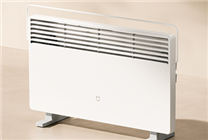Intel’s Panther Lake Architecture: A Leap in Integrated Graphics Performance
Summary
- Revolutionary Performance: Intel’s Core Ultra X7 358H processor boasts up to 91% improvement in integrated graphics performance over its predecessor.
- Enhanced Core Structure: Equipped with 16 CPU cores and 12 Xe3 GPU cores, this new architecture promises efficiency and power.
- Significant Benchmark Scores: Initial Geekbench results indicate a substantial leap in both OpenCL running scores and gaming capabilities.
On October 22, Intel’s highly anticipated Core Ultra X7 358H processor showcased its prowess in the Geekbench benchmark library, marking a significant advancement in integrated graphics technology. The data revealed that the performance of integrated graphics in this architecture may surpass that of the existing Xe2 Arc iGPU, with potential improvements reaching a remarkable 91%.
Architectural Overview
The Core Ultra X7 358H is installed in a state-of-the-art ASUS laptop, featuring a robust configuration comprising 16 CPU cores. This setup includes 4 performance cores, 8 energy-efficient cores, and 4 low-power energy-efficient cores, making it a versatile choice for a range of computing tasks. The processor also integrates 12 Xe3 GPU cores, which operate at a frequency of 2500MHz. Speculation surrounding a higher-end X9 series suggests that these cores might achieve even higher frequencies, potentially reaching 2800MHz.
The performance benchmarks yielded notable OpenCL running scores of 52,946 points and 46,841 points—likely reflecting variations in power consumption modes or power plans. When compared to the previous 8-core Arc Xe2 iGPU, the Core Ultra X7 358H demonstrates an impressive 69% performance improvement, with a maximum potential of 91%.
Power and Performance Dynamics
It’s important to note that the default thermal design power (TDP) for the Panther Lake-H architecture is set at 45W, compared to the 37W of the Lunar Lake. This increase in TDP correlates with a 50% rise in core count, emphasizing Intel’s commitment to delivering enhanced performance.
Intel has previously asserted that the Xe3 architecture would deliver a 50% performance boost over Xe2. The initial benchmark data supports this claim, indicating that the anticipated performance gains will not only be realized but may even be exceeded in real-world applications, particularly in gaming environments.
A New Era for Integrated Graphics
This significant upward trajectory in integrated graphics performance represents a turning point for users seeking reliable and powerful processors for gaming, content creation, and other demanding applications. The introduction of the Core Ultra X7 358H marks a bold step towards meeting consumer demands for higher efficiency and performance in portable computing devices.
In conclusion, the launch of Intel’s Panther Lake architecture stands to redefine expectations for integrated graphics, offering users unprecedented levels of performance and efficiency. As further details emerge and more benchmarks are conducted, the industry will be closely monitoring how the Core Ultra X7 358H fulfills its promise in real-world scenarios.
By harnessing the latest advancements in CPU and GPU technologies, Intel is positioning itself at the forefront of the mobile computing revolution, ready to cater to the evolving needs of modern users.








